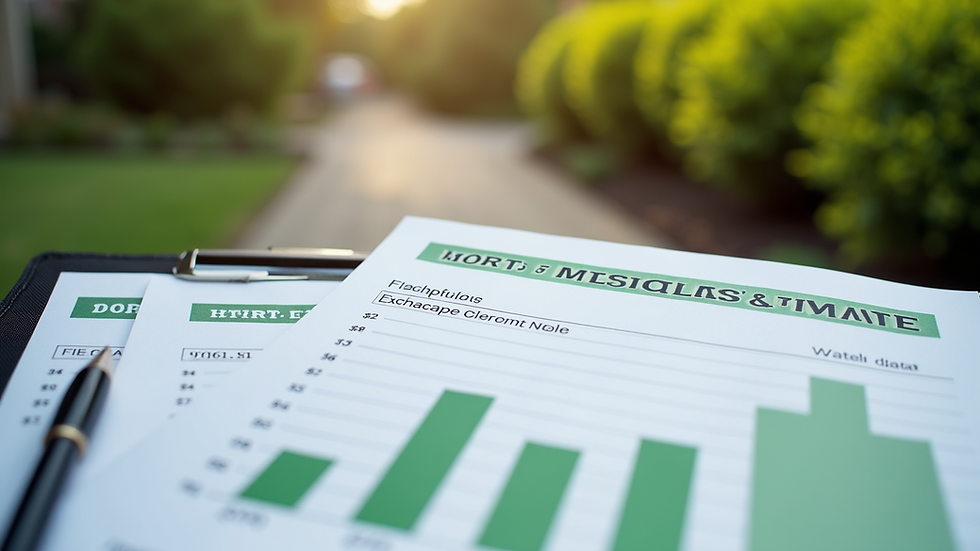Key Elements of a Perfectly Designed Landscape
- Clinton Bennett
- Apr 18
- 4 min read
Creating a perfectly designed landscape is more than just planting flowers and cutting grass. It involves a thoughtful combination of elements that come together to create a harmonious and functional outdoor space. Whether you're designing a garden, a backyard, or a commercial property, understanding the key elements of landscape design will help you achieve a beautiful and sustainable environment. In this blog post, we will explore essential components of landscape design, practical examples, and actionable recommendations to help you bring your vision to life.
Understanding Landscape Design
Landscape design refers to the art of arranging various elements within outdoor spaces to create a cohesive and aesthetically pleasing environment. The process typically involves planning, implementation, and management of the landscape, taking into consideration factors such as space, safety, and aesthetics. Successful landscape design creates spaces that not only look good but also enhance the functionality of the area.
One of the first steps in landscape design is assessing the space you have. Take note of the sun’s position throughout the day, the topography of the land, and existing features such as trees, walkways, and buildings. This information will help you make informed decisions on how to integrate new elements that complement the space.

Incorporating Plants and Greenery
Plants are the heart of any landscape design. A balance of trees, shrubs, and flowers can transform barren land into a lush oasis. When selecting plants, it’s important to consider factors such as climate, soil type, and water availability. Native plants are often the best choice as they require less maintenance and are more resilient to local conditions.
Creating layers of greenery through the use of various plant heights is also vital. Tall trees can provide shade and structure, while low-growing flowers add color and texture. Additionally, groupings of plants can lead to a more natural appearance and attract wildlife.
For example, you might create a layered garden by placing tall sunflowers at the back, with mid-height daisies in front, and a ground cover like creeping thyme at the front. This not only adds visual appeal but also encourages biodiversity.

How much does landscape garden design cost?
The cost of landscape garden design can vary widely based on several factors including the size of the area, complexity of the design, and the materials chosen. On average, homeowners should expect to spend between £2,000 and £6,000 for basic landscaping services. More elaborate designs, which include features such as water features, terraces, or commercial work, can easily exceed £15,000.
It’s essential to get quotes from multiple landscaping professionals to compare services offered and pricing. Some companies may provide a free consultation which can help you get a better idea of costs and options available. If you're considering hiring experts for your project, looking into professional landscaping design services can ensure top-quality results.

Creating Functional Spaces
A well-designed landscape should be functional as well as beautiful. Consider how the space will be used. If you entertain frequently, you might want a patio or outdoor kitchen. If you have children or pets, open grassy areas may be essential.
Walkways play a crucial role in guiding visitors throughout the landscape. They can connect different areas of your garden, such as the entrance, patio, and ornamental features. Consider using durable materials like stone or pavers and incorporate curves for a more organic feel.
Functional outdoor lighting can enhance safety and aesthetics. Use it to highlight certain features, illuminate paths, or create ambiance during gatherings. Solar lights or LED fixtures can be both energy-efficient and cost-effective options.
Water Features and Hardscaping
Integrating water features can add tranquillity and beauty to your landscape. Options range from small fountains to large ponds or waterfalls. Besides creating a relaxing atmosphere, water features often attract local wildlife, including birds and butterflies.
Hardscaping refers to the non-plant elements of landscape design. This includes patios, decks, walls, and pathways. Incorporating hardscape features can create visual interest and provide structure to your garden. It is important to ensure a balance between hardscape and soft scape elements to prevent the landscape from feeling rigid.
When selecting materials, consider durability and appearance. Natural stones, bricks, and pavers can add character, while modern materials like concrete can provide a sleek and contemporary look.
Sustainability in Landscape Design
In today's world, sustainability is a crucial aspect of landscape design. Eco-friendly practices not only benefit the environment, but they can also lower maintenance costs. Here are a few tips to create a sustainable landscape:
Use Native Plants: They require less water and are better suited to the local climate.
Implement Rain Gardens: These can manage runoff and filter pollutants from rainwater.
Install Irrigation Systems: Drip irrigation reduces water waste by delivering water directly to plant roots.
Create Wildlife Habitats: Including native plants and shelter can attract beneficial animals to your garden.
By considering sustainability in your landscape design, you'll create a lush and inviting space that is also eco-friendly.

Final Thoughts
Creating the perfect landscape design is a rewarding journey that requires careful planning, creativity, and a deep understanding of the space you are working with. By focusing on the essential elements such as plant selection, functional spaces, water features, and sustainability, you can create an outdoor environment that enhances your lifestyle and adds value to your property.
Whether you're taking on the task yourself or hiring professionals, remember that a well-designed landscape is not just an investment in aesthetics, but in your daily quality of life. Enjoy the process, and let your creativity shine through in every element you choose. Happy landscaping!



Comments